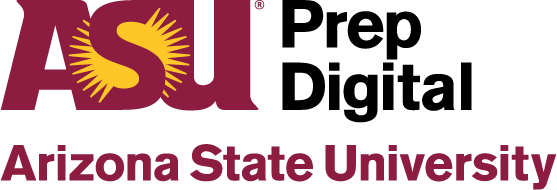The 2021-2022 school year is off to a challenging start. Tens of thousands of students across the country are facing quarantine after exposure to the highly contagious delta variant of coronavirus. Many thought this school year would bring a return to normalcy. Instead, it has left many schools and districts scrambling to come up with plans to prevent learning gaps and keep students on track when their access to in-person learning is interrupted.
When it comes to quarantine disruptions, schools need a strategy.
In the face of another year of start-and-stop learning, school administrators need to have a smart strategy addressing major concerns, such as providing defined resources and support to quarantined students, clear pathways to keep learning on track, and a method that streamlines the efforts of teachers and parents.
But where to start? Schools such as ASU Prep Academy use different strategies based on whether an entire class is quarantined or just a few students in a class. “If we send home an entire class, we’re continuing live instruction, not with a full day on Zoom, but with a handful of live check-ins with their teacher,” says Carrie Larson, Interim Head of Schools for ASU Prep Academy Immersion Campuses. “In our individual system, students go home with a computer and access to Canvas, which lists out what a student needs to do.” Other schools have tried virtual tutoring programs, partnering with part-time teachers, offering blended classrooms, or simply sending students home with a work packet. “One thing that’s constant is just the volatility,” said Amy McGrath, Deputy Vice President of ASU. “It’s so difficult to be a teacher just in the normal sense, but then you throw in all of these other variables.”
We don’t know yet what the learning outcomes of these efforts will be, but we do know every school has unique challenges, so a one-size-fits-all solution won’t work.When evaluating a potential solution, program, or partnership, examine these five areas to ensure you’re maximizing your district’s resources, offering much-needed support for students, and alleviating undue burdens on your teachers.
Strong ELA and Math Curriculum
Math and English Language Arts are foundational subjects for students where performance is often measured through high-stakes assessments. Any learning continuity strategy should prioritize these two key areas. “In our conversations with school districts we’ve decided to come up with this model called Learning Under Quarantine and really focus heavily on math and ELA,” said McGrath. Programs like Learning Under Quarantine, available through ASU Prep Digital, helps students keep their foundational skills sharp for a more seamless transition back into the classroom.
Qualified and Accessible Educators
Anyone who’s worked in education knows nothing can replace a teacher’s central role in student learning. For best results, students and parents should have access to qualified teachers familiar with instructing virtual learners. Unlike tutors, experienced virtual teachers are skilled in engaging students and building community, which will help students maintain social connections and interaction during their time under quarantine.
Customizable Options
A solid program or partnership should begin by collaborating with your teachers to ensure learning materials align with your school’s curriculum. In addition, a program should already have content available, saving time and teacher effort. Look for content with a mix of daily live teacher interaction plus asynchronous instruction and activities students can work through with minimal or no parent involvement.
Easy-to-Use Content
An effective learning loss program needs to go to work fast. There’s no time to waste with confusing or unfamiliar technology or lengthy content downloads. “It needs to be streamlined so the teacher isn’t effectively creating sub-plans for someone else to administer,” says Larson. “That is as much work as being there and teaching the day yourself.” Look for a program that integrates with your school’s existing learning management system, or one that offers easy-to-access live or recorded video sessions and posted assignments.
Strong Partnerships
The advantage of a partnership is the personal touch, connections, and experience in building programs able to meet your school or district’s needs. Look for well-connected partners who can help, such as ASU Prep Digital, which has established relationships with more than 1,338 schools and districts. With access to a vast network of experienced educators, they were able to develop the groundbreaking Learning Under Quarantine program to assist when students lose access to in-person learning.
When it comes to developing an effective program for students who have been quarantined, one thing is true—it’s easier when educators work together. “We’re all working to get better every day,” says Larson, “We know administrators are seeing the problems, but you can’t solve every problem in front of you in one day.” Her advice? “At the end of the day remind yourself you did enough, you worked hard for your team, and you’ll be back at it tomorrow. That’s what matters.”
Learning Under Quarantine
ASU Prep Digital’s Learning Under Quarantine program is a fully adaptable, just-in-time learning support for students who have been temporarily sent home for any reason. The program is currently developing options to expand learning continuity support to school districts across the country. For more information about Learning Under Quarantine programs, please email partnership@asuprep.org.
Learn more about your school’s options:
Listen to Amy McGrath, Chief Operating Officer, ASU Prep and Deputy Vice President of ASU Educational Outreach, discuss Learning Under Quarantine on the Getting Smart Podcast.


